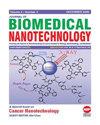Effects of Flavonoid and Saponins on Protecting HaCaT Cells and Ameliorating Ultraviolet Radiation B/Ultraviolet Radiation A-Induced Skin Photoaging
IF 2.9
4区 医学
Q1 Medicine
引用次数: 0
Abstract
The skin serves as a natural barrier in the human body, protecting against pathogenic microorganisms and ultraviolet radiation (UV). Skin photoaging is a physiological stress reaction characterized by skin relaxation, dryness, abnormal pigmentation, and increased wrinkles due to prolonged exposure to ultraviolet radiation. The search and development of natural products that can effectively prevent skin photoaging have gained significant attention. We established the photoaging model by subjecting HaCaT cells and ICR mice to UVB+UBA irradiation. We employed CCK8 to assess the impact of Totol Flavonoid of Lichi Seed (TFLS) and Lychee Seed Saponins (LSS) on cell viability. We evaluated the effects of TFLS and LSS on apoptosis using flow cytometry. We utilized SIRT-IN-1 inhibitor to suppress the activity of SIRT1 and examined the mechanism by which TFLS and LSS alleviate UV-induced photoaging damage in cells and mice. We assessed skin inflammation in photoaging ICR mice through HE staining. We evaluated changes in collagen fibers and glia in the skin of photoaging ICR mice using Masson staining. We employed TUNEL staining to evaluate the apoptosis of skin cells in photoaging ICR mice. We extracted nucleic acid using nano-magnetic beads and detected the expression of SIRT1, TGF-β1, and Smad3 in HaCaT cells and mouse skin tissues using qPCR and WB. The study results demonstrate the protective effect of TFLS and LSS against UV-induced photoaging in HaCaT cells and ICR mouse skin, mitigating the damage caused by UV exposure. The mechanism underlying the attenuation of UV-induced photoaging by TFLS and LSS may involve activation of the SIRT1-TGF-β1/Smad3 signaling pathway.类黄酮和皂苷对保护 HaCaT 细胞和改善紫外线辐射 B/紫外线辐射 A 引起的皮肤光老化的影响
皮肤是人体的天然屏障,可抵御病原微生物和紫外线辐射(UV)。皮肤光老化是一种生理应激反应,其特点是由于长期暴露于紫外线辐射下,皮肤松弛、干燥、色素异常和皱纹增多。寻找和开发能有效防止皮肤光老化的天然产品已受到广泛关注。我们将 HaCaT 细胞和 ICR 小鼠置于 UVB+UBA 照射下,建立了光老化模型。我们采用 CCK8 评估荔枝籽黄酮(TFLS)和荔枝籽皂苷(LSS)对细胞活力的影响。我们使用流式细胞术评估了 TFLS 和 LSS 对细胞凋亡的影响。我们利用 SIRT-IN-1 抑制剂抑制 SIRT1 的活性,并研究了 TFLS 和 LSS 缓解紫外线诱导的细胞和小鼠光老化损伤的机制。我们通过 HE 染色评估了光老化 ICR 小鼠的皮肤炎症情况。我们使用马森染色法评估了光老化 ICR 小鼠皮肤中胶原纤维和神经胶质的变化。我们采用 TUNEL 染色法评估光老化 ICR 小鼠皮肤细胞的凋亡情况。我们使用纳米磁珠提取核酸,并使用 qPCR 和 WB 检测 HaCaT 细胞和小鼠皮肤组织中 SIRT1、TGF-β1 和 Smad3 的表达。研究结果表明,TFLS 和 LSS 对 HaCaT 细胞和 ICR 小鼠皮肤中紫外线诱导的光老化具有保护作用,可减轻紫外线照射造成的损伤。TFLS 和 LSS 减轻紫外线诱导的光老化的机制可能涉及激活 SIRT1-TGF-β1/Smad3 信号通路。
本文章由计算机程序翻译,如有差异,请以英文原文为准。
求助全文
约1分钟内获得全文
求助全文
来源期刊
CiteScore
4.30
自引率
17.20%
发文量
145
审稿时长
2.3 months
期刊介绍:
Information not localized

 求助内容:
求助内容: 应助结果提醒方式:
应助结果提醒方式:


